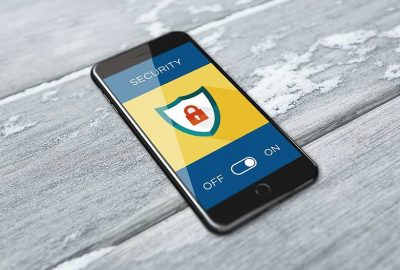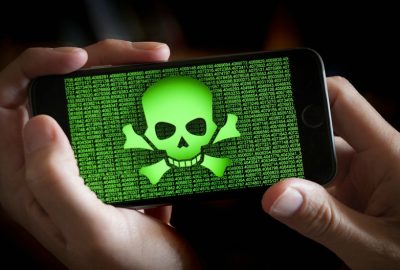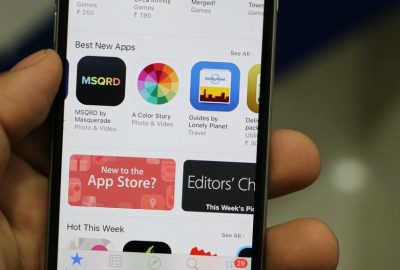 There are currently billions of mobile phone users in the world. This number grows daily, and people find better apps to use in their smartphones. However, with the proliferation of phone software, new vulnerabilities appear. As people switch to mobile devices, so do cybercriminals. Hackers find new ways to attack users through their mobile phones. And one of the most common attacks they use is fake apps.
There are currently billions of mobile phone users in the world. This number grows daily, and people find better apps to use in their smartphones. However, with the proliferation of phone software, new vulnerabilities appear. As people switch to mobile devices, so do cybercriminals. Hackers find new ways to attack users through their mobile phones. And one of the most common attacks they use is fake apps.The proliferation of Fake Apps
McAfee’s Mobile Threat Report from 2019 detected more than 65,000 fake apps. Even in the Apple app store, known as the most secure, were 17 applications infected with malware. And all the apps that contained malware in the Apple Store came from the same developer.
The problem with fake apps is that many people cannot tell them apart from real ones. That is why many are victims of this attack; for not knowing the characteristics that identify them. Fake apps may look like real ones, but they have features that make them different. Here are the ways you can spot a fake app in an app store.
Check the names
 Before downloading an app, be sure to verify its name. Check that there are no misspelled words or if the logo looks different in some way. The most popular apps often have a false alternative. That is why, when you look for a very popular game or tool, you have many and similar options.
Before downloading an app, be sure to verify its name. Check that there are no misspelled words or if the logo looks different in some way. The most popular apps often have a false alternative. That is why, when you look for a very popular game or tool, you have many and similar options.
Another name that can also help verify accuracy is that of the developer. If you want to download an app, knowing who developed it and which company they come from is a great tip. Getting a better idea of what you want to download will help you detect if it is legitimate. A good practice is to search for other applications that the developer has created. By clicking on the name of the dev you can see all the apps they have designed under their official brand.
Reviews and release date
Opinions and comments can tell you what other users have experienced. Pay special attention to negative comments or people complaining about problems with their devices after downloading. This is usually an unequivocal sign that the application may contain malware.
Another detail lies in the launch date of the app. A recently released app for a product that is in demand may be fake. Because the most popular apps have been on the market for some time. That is why the date should have the words “updated on” instead of a specific date.
There’s another important number: Downloads. Popular apps have millions of downloads, but if they are fake, the number of downloads is much lower. Take for example the Facebook app, with more than 500 billion downloads. If searching the store you get a Facebook app below the mentioned number, it is a fake app.
Discounts and images can be a trap
Some applications offer discounts that, when analyzed, are too good to be true. If an application promises you excellent features for a small price, it is likely a fake app. This technique is popular with fake devs to persuade people into downloading.
Stores also offer sample images or screenshots of applications before download. By observing in detail the interface of an app, we can identify flaws or irregularities. Recreating a good interface is easy, but fake apps often use words that the official devs wouldn’t.
Fake Apps descriptions can reveal flaws
 Another tip is to check the description of an application before downloading it. A dedicated reader can notice if it is bad or has errors in it. Official apps shouldn’t make you suspicious in any way. Legitimate developers dedicate to describing their application well to their users. They include important details, like features of the app, even in several languages.
Another tip is to check the description of an application before downloading it. A dedicated reader can notice if it is bad or has errors in it. Official apps shouldn’t make you suspicious in any way. Legitimate developers dedicate to describing their application well to their users. They include important details, like features of the app, even in several languages.
Permits are the most important detail
Applications request permission to function on your mobile device. Yet, bogus applications request authorizations that they don’t need. Before you download an app, be sure to check what feature it needs to work and that it doesn’t ask you for anything else. If a game or calculator requests access to your gallery or contacts, that’s an alert. When in doubt, it is best to uninstall and verify again that everything is in order.
How to react to malware
Knowing the signs that an app is false is vital for your security. Learning to distinguish the signs that reveal them can help protect you from hackers.
But what should you do if you already downloaded a fake app?
- Immediately remove the app from your mobile device. It can only do damage while installing.
- If you can’t find the app on your phone, go to the app store and look for it under “Installed Apps”.
- In case of serious damage, use the factory reset. This means that you have to erase all the content on your phone, but you could save the hardware.
The most common attacks on fake apps
The attacks that can come from fake applications usually vary. It could be data theft, unwanted ads, or malware affecting your device. However, the most dangerous of these is phishing.
Phishing is a cybercrime in which a target is contacted, in this case from the fake application. This contact is made by someone who poses as a legitimate institution such as the developer. This way, they get confidential information from this person. Personal information, bank and credit card details, and passwords. In the case of phishing through Fake Apps, it is a little more delicate. Because the fake app gives access to this information directly from the phone.
Protecting your private data from these breaches is vital for your digital well-being. If a device of your employees gets malware, the attack can harm your linked computers. You can protect your IT environment by using programs that scan vulnerabilities. AlienVault, for example, is a unified platform designed to provide a complete defense. Its Event Correlation is one of the best on the market, effective against the latest threats.
If you want to know more about this topic and AlienVault, contact us. We offer you the best tools on the market and a team to advise you and help you on your way to a more efficient IT environment.



